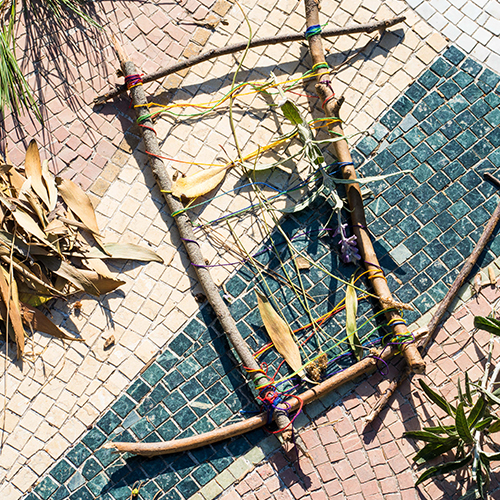Children design and construct a miniature loom using natural materials, then gather items from nature and practice the skill of weaving.
Materials Required
- Sticks
- Colorful yarn or twine
- Collected natural items (grasses, flowers, leaves, feathers, etc.)
- Recycled materials (e.g. strips of different colored fabric, old plastic bags, ribbons, newspaper or magazines cut into strips)
Instructions
- Introduce children to looms, including what they are and what they’re used for. Let children know that they will be making their own looms and creating unique patterns by weaving natural and/or recycled materials!
- Lead children on a short adventure to collect sticks for the frame of the looms. Sticks that are 1/4 to 3/4 inch in diameter will work well for this craft.
- Support children as needed to lash the sticks together with yarn to create the base of their loom. Pull tight as you wrap the yarn in a crisscross fashion around the two sticks, then tie it off at the back.
- Encourage children to make the loom any size or shape. They can make a rectangle, triangle, or any other shape they want.
- Tie a piece of yarn around one of the corners and begin wrapping it around the loom. Tie the yarn off on one of the corners when you reach the other side of the loom.
- If you’d like, take children on another short nature walk (optional) to collect interesting grasses, flowers, leaves, feathers, and pieces of bark on the ground.
- Invite children to weave their collected treasures, or provided recycled materials, through the strings of the loom.
Additional Tips
Try these add-on activities:
- If you are not near a natural environment, use cardboard or thick cardstock as the frame instead of sticks, and ribbon, thin strips of fabric, or other recycled materials for weaving.


